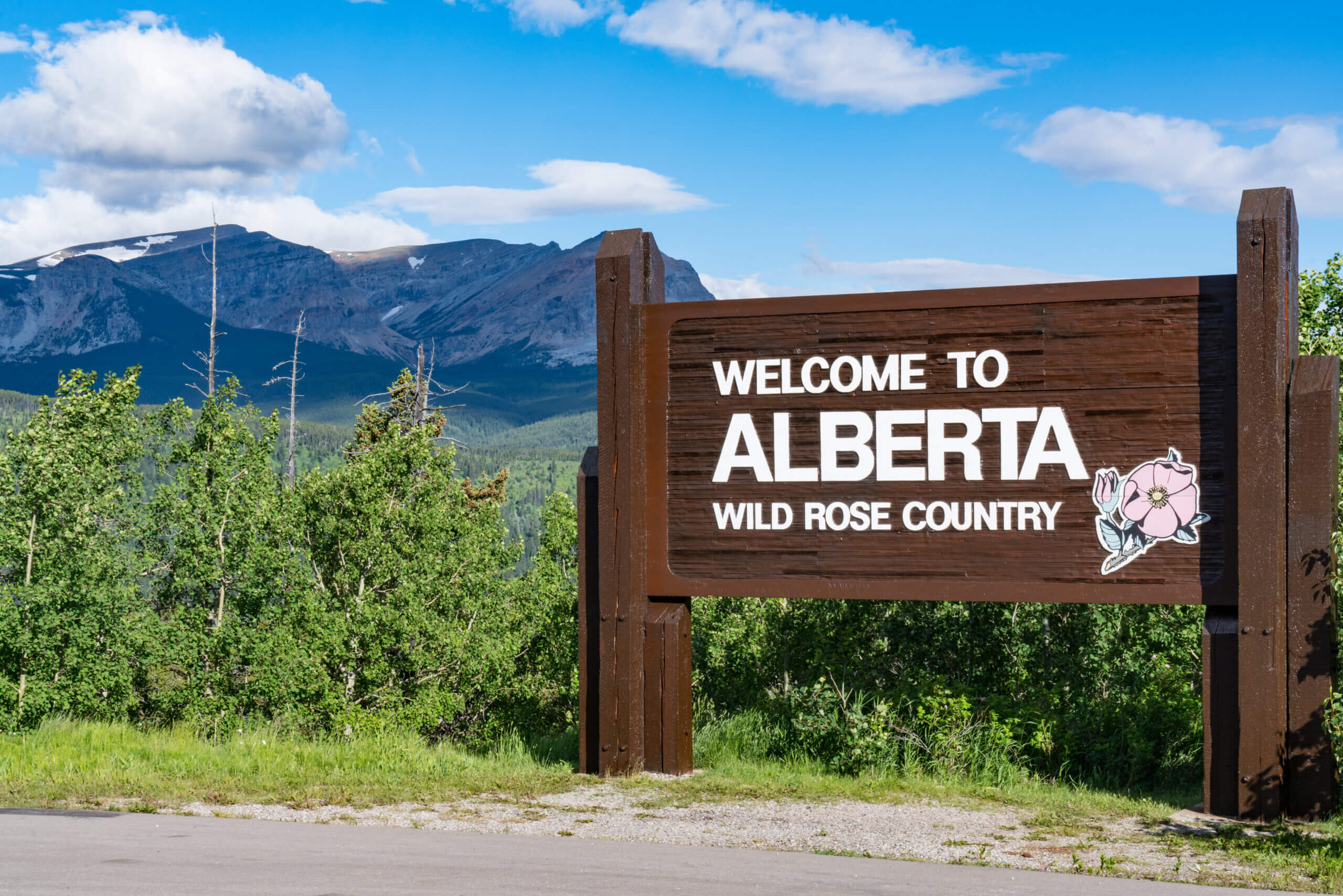*FYI - this post may contain affiliate links, which means we earn a commission at no extra cost to you if you purchase from them. Also, as an Amazon Associate I earn from qualifying purchases. Check out our Privacy Policy and Disclosure for more info.
From snow-capped mountains to thundering waterfalls, Alberta offers those looking for beautiful places to visit an endless supply of options.
The province of Alberta is mostly known for its oil and agriculture industries, but there are many interesting and scenic destinations to discover here as well.
In this post, we’ll be sharing our top picks for places to visit in Alberta, including the most stunning national parks, exciting cities and more unusual attractions.
We hope you enjoy learning about this stunning province and be sure to let us know in the comments which Alberta must-sees we should add to our list!
Banff National Park
Banff National Park is easily one of the most beautiful and most popular places to go in Alberta.
Located in the Rocky Mountains of Alberta, Banff is the oldest national park in Canada (although it was initially called Rocky Mountains Park when it was established in 1885) and home to many stunning natural landscapes. The town of Banff is the gateway for exploring the national park and also home to some excellent museums.
Within the national park is Lake Louise, a beautiful turquoise body of water and another one of the most famous Alberta tourist attractions. The hamlet of Lake Louise next to the actual lake is also home to the landmark hotel the Fairmont Chateau Lake Louise, a luxurious base for enjoying the many activities on offer in Banff National Park.
Other gorgeous spots to explore, especially by hiking in summer, are Lake Moraine, Peyto Lake, the Vermilion Lakes and Bow Lake. Sulphur Mountain overlooks the town of Banff and has a fun gondola to ride to the top for amazing views while the Upper Johnston Waterfalls are well worth the hike from the Johnston Canyon campground.
Of course, while summer is popular for swimming and hiking, in winter the Banff ski resorts are filled with snow bunnies who come to enjoy all the skiing, snowboarding, ice-skating and other cold-weather activities!
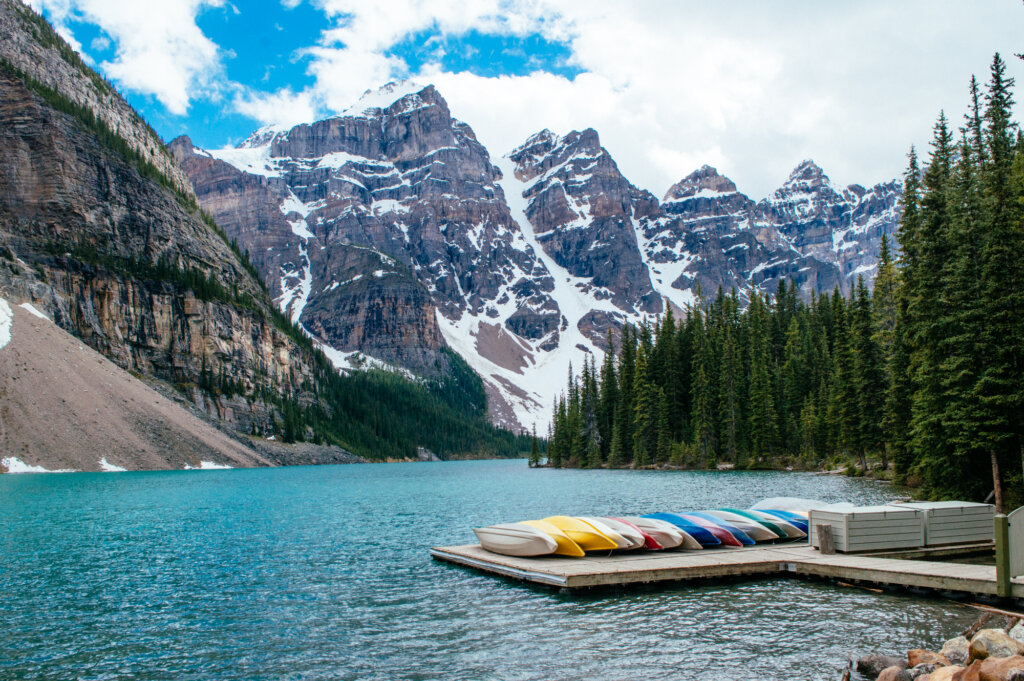
Jasper National Park
While not quite as famous as Banff, Jasper National Park is still one of our personal favourites on any list of nice places to visit in Alberta.
Like Banff, Jasper is the name of both the national park and the main town within the park. While Jasper is also stunning, it doesn’t receive as many visitors as Banff, so it’s the ideal choice if you want a more idyllic and remote feeling trip.
Jasper National Park is also a UNESCO World Heritage Site known for its mountainous landscapes, which form part of the Canadian Rocky Mountains. Because of these mountains, Jasper is home to some epic waterfalls, like the Sunwapta Falls and Athabasca Falls.
Maligne Lake is one of the most beautiful spots in Jasper National Park and photos of it are often used in advertisements for the Canadian Rockies. The park is filled with excellent hiking trails in summer and smaller ski resorts for a less busy winter experience than Banff.
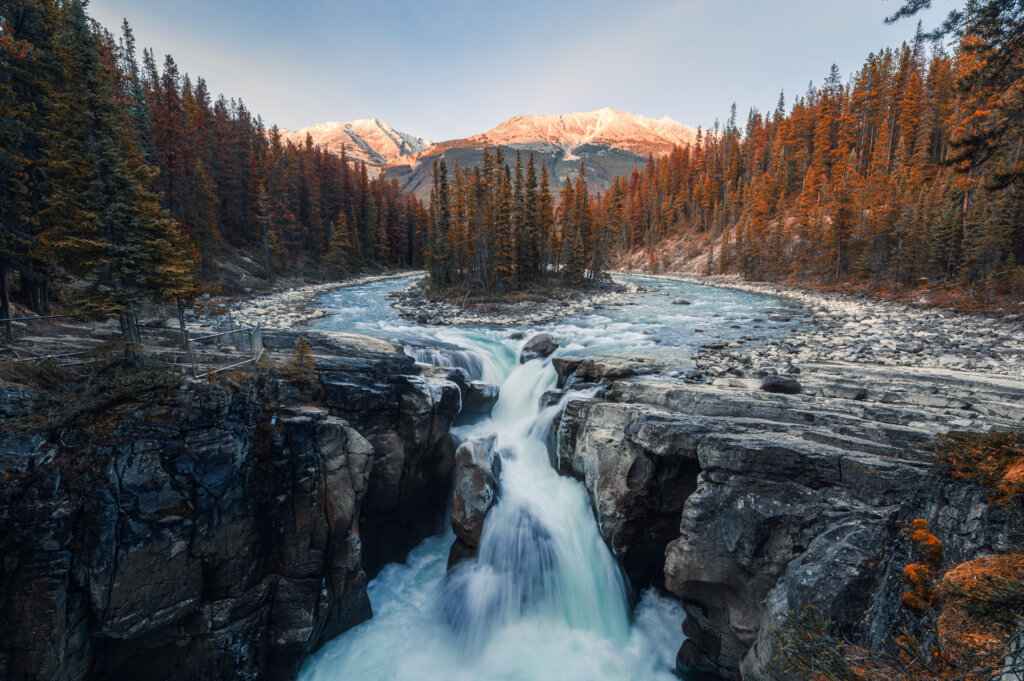
Athabasca Glacier & Columbia Icefield
When it comes to cool places to visit in Alberta you can’t go past the Athabasca Glacier within the Columbia Icefield! (Get it?!)
The Columbia Icefield is the largest icefield in the Rocky Mountains, straddling the Continental Divide on the border between both British Columbia and Alberta. This icefield has six main “toes” where the glacier snakes to an end-point, one of which is the Athabasca Glacier, which is the most easily accessible and therefore the most-visited glacier in all of North America.
If you have ever wanted to experience walking on an actual glacier then you can at this spot located in between Jasper and Banff National Parks. You do need to join a formal tour in order to walk on the glacier ice though, as it requires special vehicles and guides to avoid dangerous crevasses.
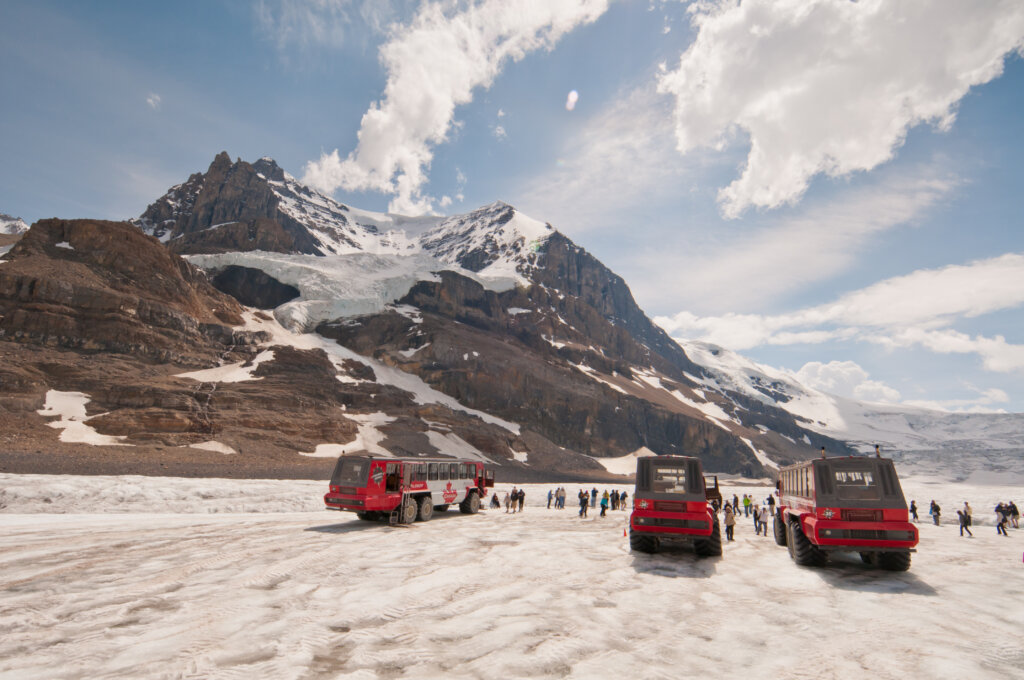
Rundle Forebay Reservoir
While fans of Stand Up Paddleboarding (SUP) will find plenty of stunning places to partake in Alberta, one of the best spots is the Rundle Forebay Reservoir in the town of Canmore.
Canmore is located about 81 kilometres (50 miles) west of Calgary, close to the border of Banff National Park and ringed all around by epic mountains. The Rundle Forebay Reservoir (known by locals as just ‘the reservoir’) is an excellent location for stand up paddleboarding as the waters are so clear and calm.
This reservoir is particularly good for beginners as it’s sheltered from the wind but anyone will enjoy the experience of paddling in the turquoise waters with the epic backdrop of Ha Ling Peak and Mount Rundle.
If you don’t have your own paddleboards you can rent them in the town of Canmore and for more activities, don’t miss the beautiful Grassi Lakes hike which starts a bit further up the road.
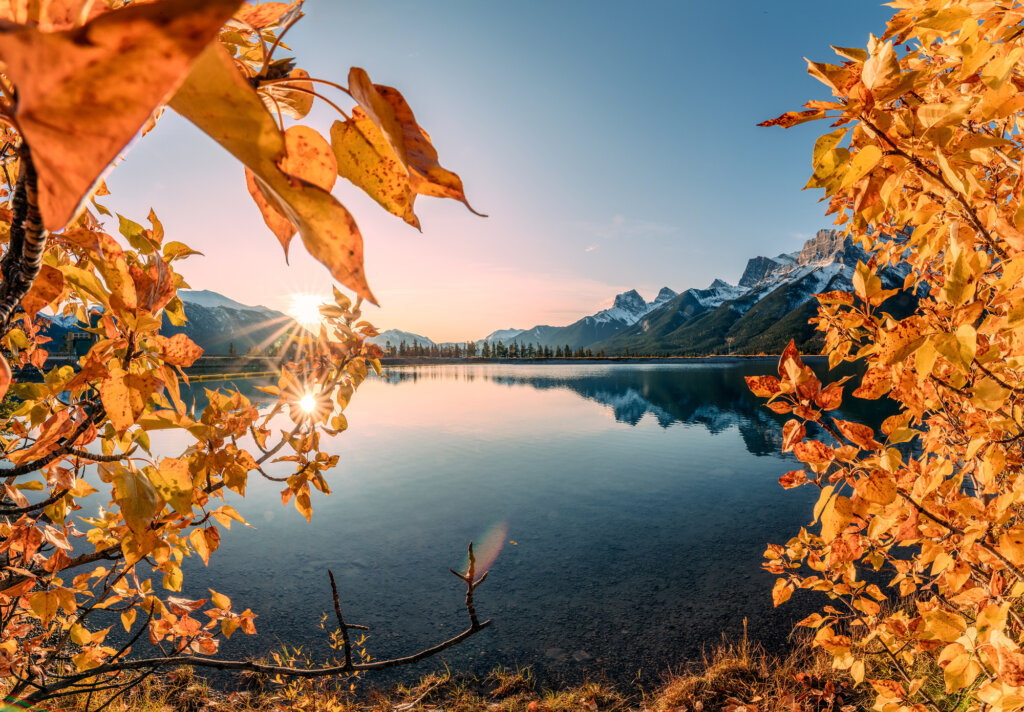
Drumheller
The town of Drumheller is one of the most unique and interesting Alberta places to visit, but not only because it’s home to the world’s largest dinosaur!
Drumheller is located within the Red Deer River valley and Badlands that are often called “Dinosaur Valley” due to the many dinosaur fossils that have been discovered in the area. Drumheller is also called “the town of the dinosaurs” and the first thing visitors see when driving in is a 26.3 meter (86 foot) high Tyrannosaurus Rex model.
At 46 metres (151 feet) long as well, this model T-Rex is actually larger than the largest T-Rex fossil ever found, but this just means that visitors can actually go inside the dinosaur and look out through his mouth!
Dino fans should also head to the Royal Tyrrell Museum of Palaeontology while in Drumheller, and go hiking in the Badlands surrounding the town to see the unique natural rock formations called hoodoos.
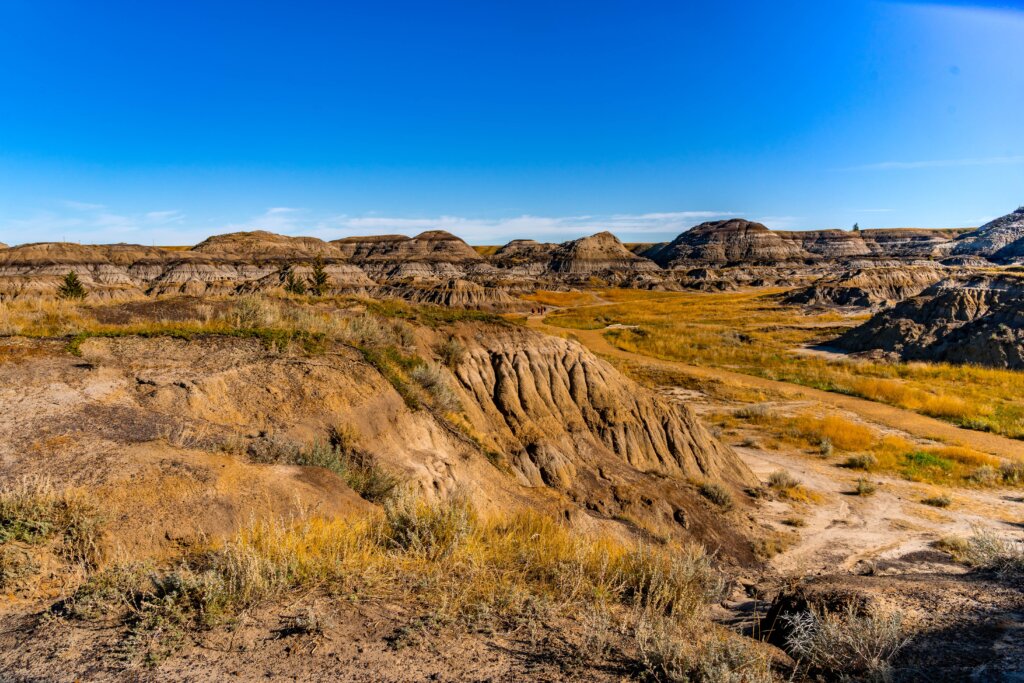
Lundbreck Falls Provincial Park
For another one of the dreamiest places to visit in Alberta, Lundbreck Falls Provincial Park is a wonderful spot to to see magnificent waterfalls, sometimes called the “Niagara Falls of Alberta”.
This provincial park is located just off the main highway, and also features a campground with basic facilities if you want to stay longer to really experience the beauty of the falls. The two main waterfalls drop about 12 metres (39 feet) into the water below and there’s a viewing platform to ensure you get excellent photos while visiting.
A hike all the way around the falls is another good way to spend some time here, although it’s equally as charming for a picnic or short break as you’re passing through the area. When it’s not too busy this is a great fishing location, although it can be filled with swimmers in the warmer months.
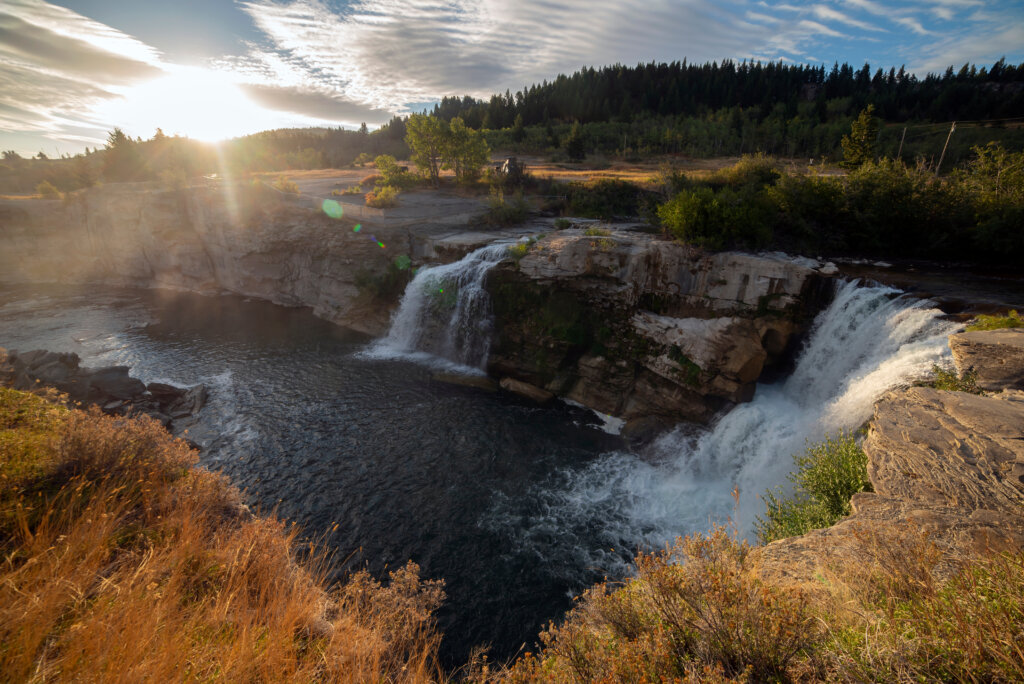
Dinosaur Provincial Park
Another one of Alberta’s UNESCO World Heritage Sites is Dinosaur Provincial Park, which is known for the abundance of dinosaur fossils which have been found there.
It’s located just under a two-hour drive from Drumheller, the other ‘dinosaur spot’ in Alberta and there’s also a Field Station of the Royal Tyrrell Museum, which has its main base in Drumheller. The fossils of 58 different dinosaur species have been found here, along with over 500 specimens of these species which are now displayed in museums around the world.
Any dinosaur enthusiast will not want to miss out on a visit to this park, especially in summer as a number of public programs are on offer to take part in.
At any time of year the displays at the visitor center can be enjoyed and a walk through the park also provides sights of hoodoo rock formations in the Badlands landscape. Maybe you’ll even find your own dinosaur fossil!

Waterton Lakes National Park
Waterton Lakes National Park is a gorgeous area where Alberta’s prairies meet the peaks of the Rocky Mountains.
As might be obvious from the name, there are many beautiful clear lakes within the park boundaries, along with majestic waterfalls, colourful rocks and plenty of wildlife. Red Rock Canyon is one of the most spectacular sights within the park, with bright red rock walls lining the creek.
Next to Waterton Lake is the Prince of Wales Hotel, a historic hotel which was built by the Great Northern Railway Company to try and entice visitors from America during US prohibition. It’s a magnificent wooden building with elements of Swiss chalet architecture and definitely worth a splurge to stay there while exploring the park!
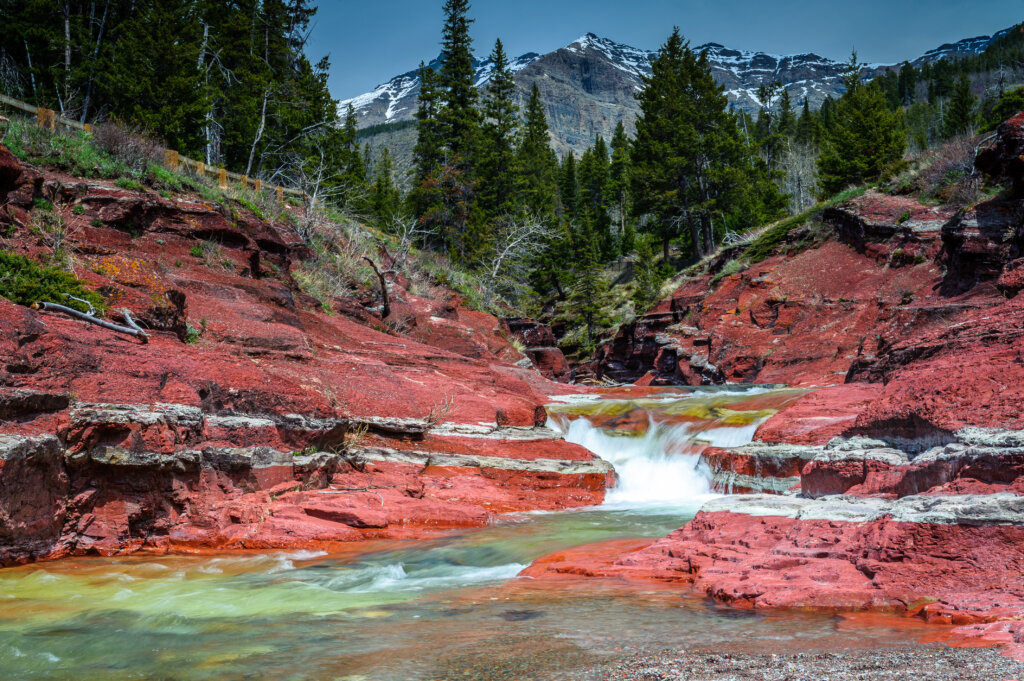
Writing-on-Stone Provincial Park
Writing-on-Stone Provincial Park is a fascinating destination in Alberta, as it’s a UNESCO World Heritage Site which contains both unusual landforms as well as the greatest concentration of Indigenous rock art in North America’s Great Plains area.
The land that is now protected as a park is filled with sedimentary rocks, where melting glaciers eroded soft sandstone into many coulees and hoodoos of unusual shapes. The park is also sacred to the Blackfoot people, who have lived in the area for around 9,000 years.
Many of the famous rock carvings (petroglyphs) and paintings (pictographs) within the park were created by the Blackfoot, along with other First Nations groups such as the Shoshone. It’s possible to camp within Writing-on-Stone Provincial Park, so that you have ample time to go hiking along the winding Milk River and see the stunning rock formations with ancient markings.
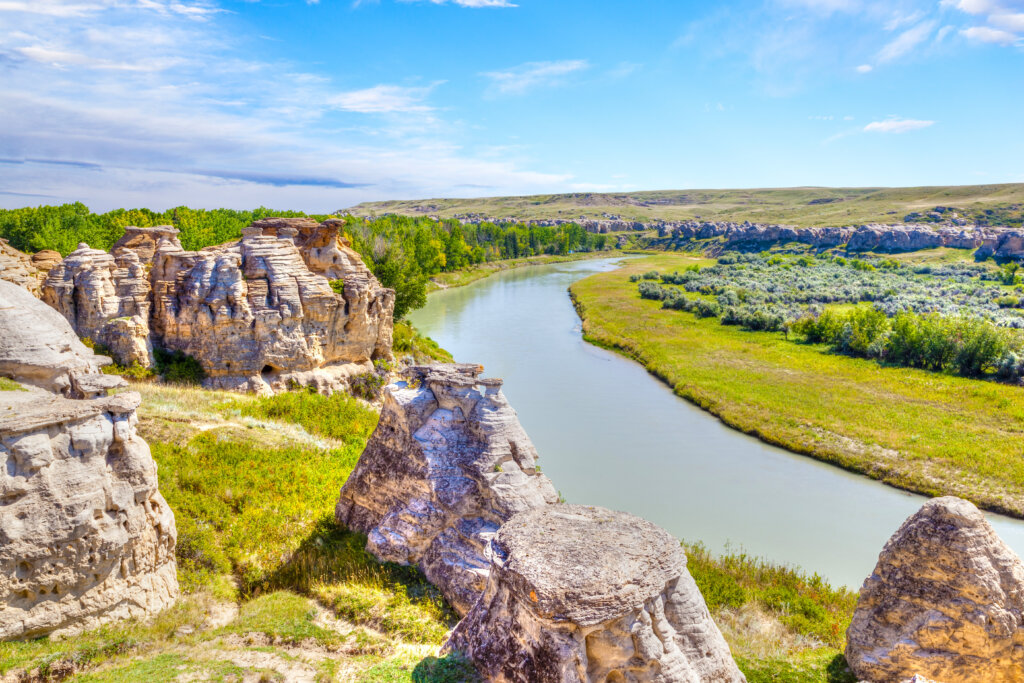
Calgary
While it’s not the capital, the city of Calgary makes for one of the best vacation spots in Alberta, as well as one of the best places to live!
Calgary is the largest city in Alberta, located on the Bow River in the transitional area where the Canadian Rocky Mountains meet the Canadian prairies. Calgary is perhaps most famous for the annual Calgary Stampede, a ten day rodeo event that takes place in July and draws Wild West fans from all over North America.
Outside of the stampede, Calgary Tower is the best place for views over the city, as it’s the highest 360-degree observation deck in the world. It also houses a revolving restaurant, for a romantic meal overlooking the city and distant mountains. In 2012 Calgary was named the cultural capital of Canada and there remain many excellent outdoor art installations which are a remnant of that title.
Calgary is also where the 1988 winter Olympics were held, as immortalised in the cult classic film Cool Runnings!
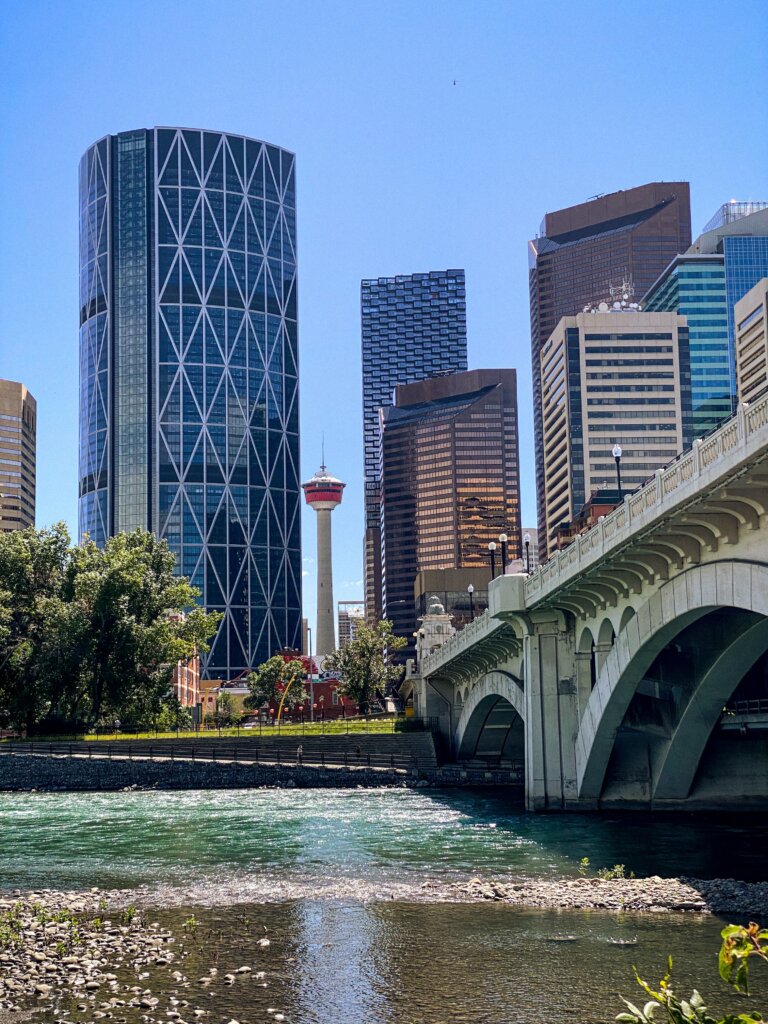
Edmonton
The capital of Alberta is Edmonton, a cosmopolitan city located on the North Saskatchewan River about three hours north of Calgary.
Edmonton is often called “Canada’s Festival City” due to the large number of festivals it hosts, particularly in summer when the city receives 18 hours of light each day.
One of the main attractions in Edmonton is the Art Gallery of Alberta, with a collection of artworks focused on Alberta and the rest of Canada inside a crazy contemporary building featuring giant steel ribbons undulating above Churchill Square.
Manchester Square is another beautiful part of Edmonton, with shops and restaurants in an area that’s been redeveloped to look distinctly European with a charming promenade. On the outskirts of the city is Fort Edmonton Park, the largest living history museum in Canada where visitors can learn all about the history of the region.
Edmonton is also home to one of the prime tourist places in Alberta; the West Edmonton Mall which contains the world’s largest indoor amusement park, largest indoor lake, largest indoor wave pool, a skating rink, and a zoo!
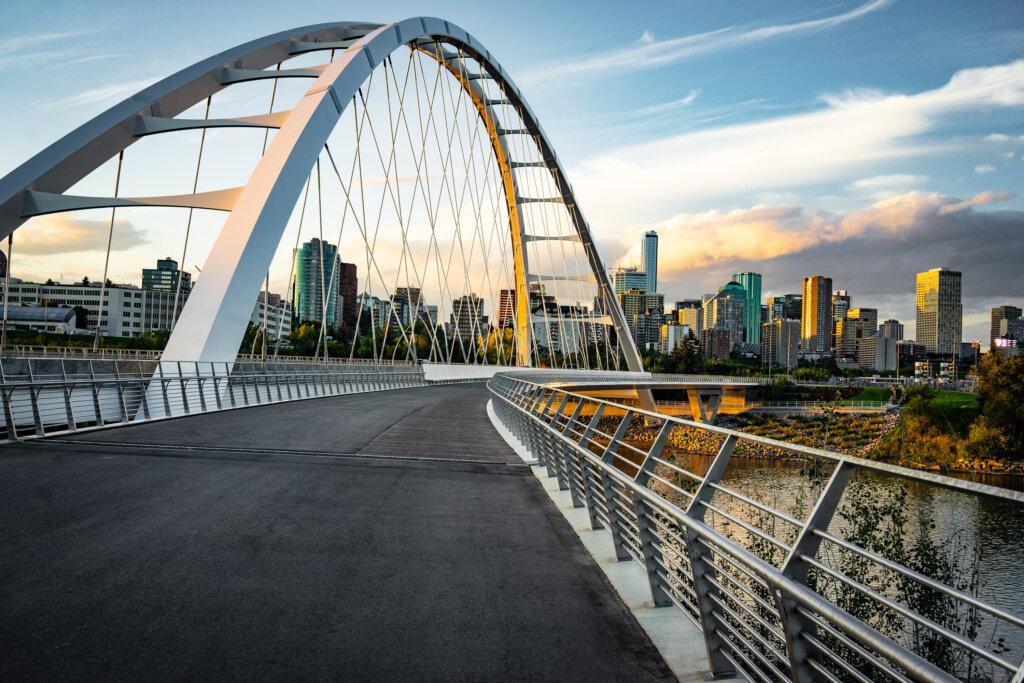
Saamis Tepee
As well as the largest dinosaur in the world, Alberta is also home to the largest tepee in the world, located just outside the town of Medicine Hat.
The Saamis Tepee was originally built for the Winter Olympics in Calgary in 1988, where it stood in the McMahon Stadium and housed the Olympic Flame.
After the Olympics it was moved to the town of Medicine Hat where it still stands today as an iconic sight towering over the Trans-Canada Highway.
Standing at 65.5 metres tall and weighing around 200 metric tons, this impressive structure is located on top of the Saamis Archaeological Site, which was once a buffalo camp and meat processing site.
The round shields hold storyboards showing different aspects of native culture and history. Even the colours of the tepee are symbolic, with blue for the flowing river, white for purity and red depicting the sun.
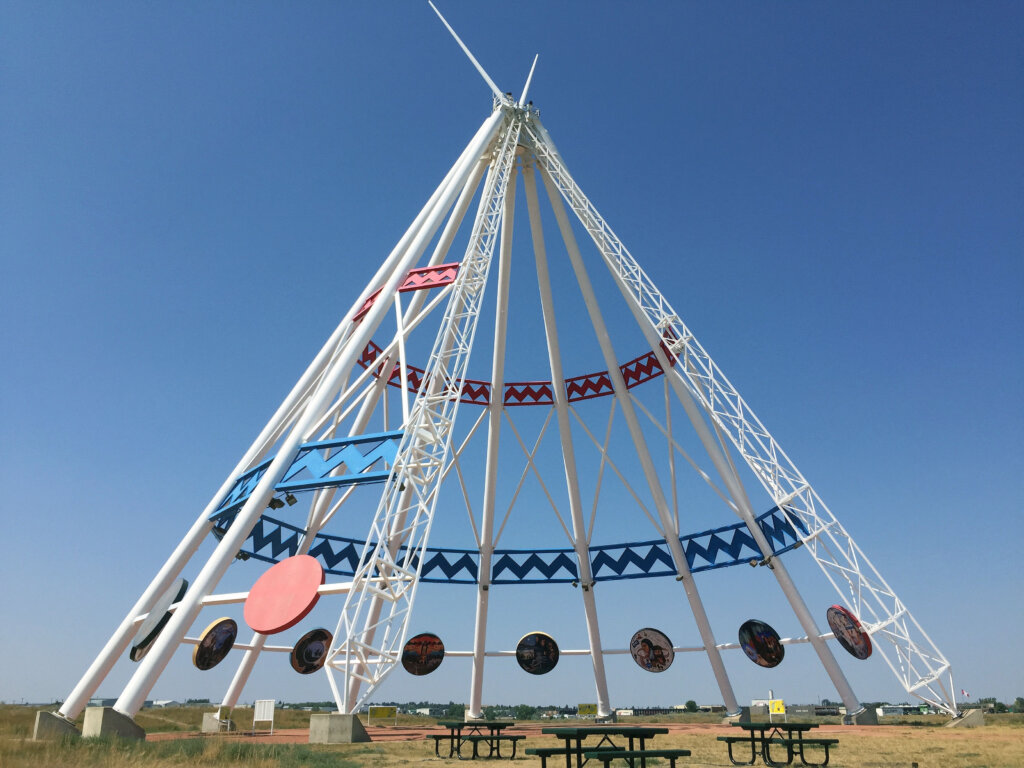
Vegreville Pysanka
Continuing with the theme of world’s largest items in Alberta is the Vegreville Pysanka – the world’s second-largest Easter egg!
The Vegreville Pysanka is giant sculpture of a pysanka, which is a type of decorated egg originating in Slavic cultures that were gradually transformed into the Easter egg symbol by Christians. This particular giant pysanka is of Ukrainian design, as it was created by Canadian artist Paul Maxym Sembaliuk, who is of Ukrainian descent.
Created out of 2D anodized aluminium tiles this egg sculpture is magnificent, with patterns of hexagons, triangles and stars all over it in shiny silver, gold and black.
And while technically the largest pysanka in the world is built into the Pysanka Museum in Ukraine, that one is missing the bottom section so the Vegreville Pysanka is definitely the largest complete giant Easter egg in the world!

Giant Perogy, Glendon
Apparently they really like to build giant things in Alberta, because the town of Glendon is also home to the world’s largest perogy!
This particular monument was built as a tribute to the East European cuisine which gained popularity in Canada, and the Giant Perogy statue is also located right next door to a perogy café. Any stop to get a photo of the roadside attraction should definitely be combined with a taste of their Ukrainian and Chinese perogies.
The giant perogy statue was a bit confusing when it was first constructed in 1993, so a fork was added to make it more obvious what it was! The complete structure stands 27 feet tall and weighs around 6,000 pounds, making it an impressive addition to the “Giants of the Prairies” sculptures found in North America.
Mallard Duck, Andrew
Rounding out our collection of giant attractions in Alberta is the massive Mallard Duck statue located in the town of Andrew.
The world’s largest mallard duck is located about an hour and 20 minutes’ drive from Edmonton, at the junction of Highways 855 and 45. This sculpture depicts a male mallard duck in flight on top of a pole and was built in honour of the nearby wetlands where many water birds breed, including mallard ducks.
With a wingspan stretching 7.5 metres (23 feet) and weighing in at more than a ton, you definitely wouldn’t want to see this bird bearing down on you demanding bread crusts! Luckily he is stationary, although bird enthusiasts will love exploring the wetlands nearby to see real birds.
The giant Mallard Duck is also only about a half-hour drive from the Vegreville Pysanka, so you could ‘kill two birds with one stone’ as it were and see them both!
Rowley Ghost Town
One of the most unique Alberta attractions has to be the almost completely abandoned town of Rowley.
This rather eerie ghost town was once a bustling place with more than 500 residents. After the Great Depression the population fell and now only about eight people live in the town, which is filled with empty old buildings.
The remaining residents have managed to transform the town into a fascinating heritage site though, and keep the abandoned buildings from falling into complete disrepair.
Now visitors can head to Rowley for free tours of the town in summer, to take photos of the eerily abandoned farm equipment and buildings, while seeing if they can spot any ghosts.
The historical buildings make it feel like you’re walking on a movie set for a Wild West film, but all the crew have gone home!

Wood Buffalo National Park
Wildlife enthusiasts will probably find Wood Buffalo National Park to be one of the best places to visit in Alberta as it’s the largest national park in Canada and a UNESCO World Heritage Site.
Covering an area of 44,807 square kilometres (17,300 square miles), Wood Buffalo National Park is larger than the country of Switzerland! It was established in 1992 to protect the world’s largest herd of free-roaming wood bison (hence the name) but is also home to many other animal and bird species.
For a time, part of Wood Buffalo National Park was the only nesting habitat for the endangered Whooping Crane, although reintroduction projects have helped these birds (the tallest in North America) nest in the United States of America as well.
Wood Buffalo National Park is also the world’s largest dark-sky preserve and an excellent spot to see the Northern Lights. You can only visit by camping or renting a cabin though, which just means it’s also a great place to get back to nature.

Cypress Hills Interprovincial Park
We already talked about Cypress Hills Interprovincial Park in our guide to Saskatchewan attractions, but since it covers two provinces it can’t be left out of a list of Alberta attractions as well!
The largest section of Cypress Hills Interprovincial Park is located in Alberta, so there are plenty of ways for visitors to experience this beautiful wild area. It is home to many species of flora and fauna, including elk, mule deer, white-tailed deer, pronghorns, wolves, lynxes, coyotes, beavers, bobcats and mountain lions.
In the Alberta section of the park is the highest point between the Rocky Mountains and Labrador, Head of the Mountain Viewpoint. The park is filled with hiking trails while also offering opportunities for visitors to go kayaking, mountain biking, canoeing and stand up paddleboarding in summer. In winter, visitors can hire kicksleds, snowshoes, skates, and cross-country skis to enjoy the snowy activities on offer.
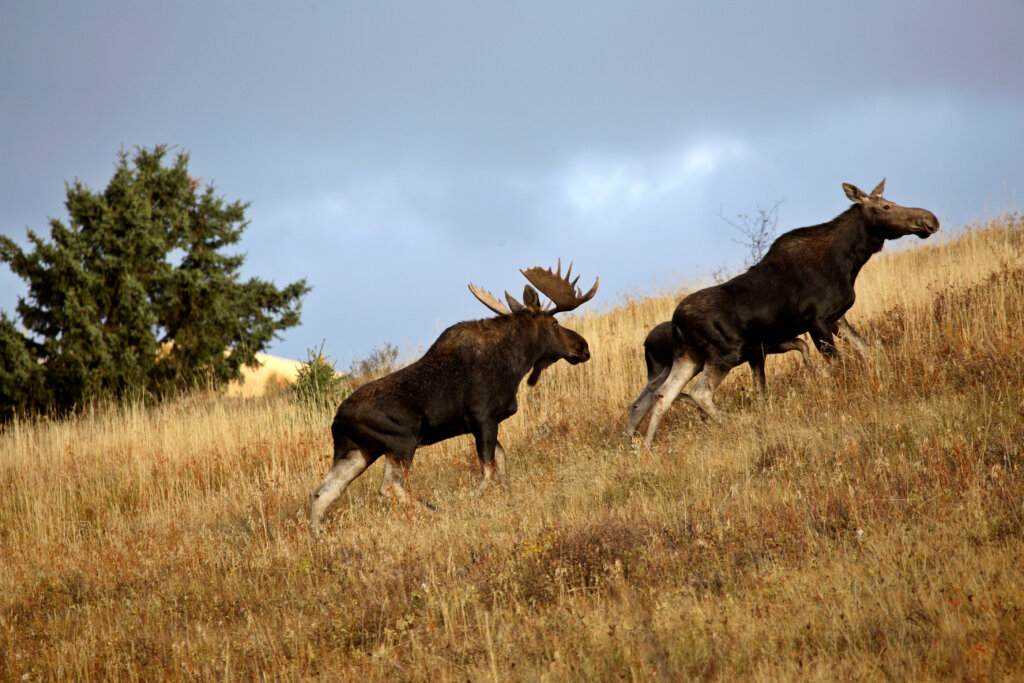
Did We Miss Any of Your Favourite Places to Visit in Alberta?
Let us know in the comments so we can add more amazing spots to our list!
